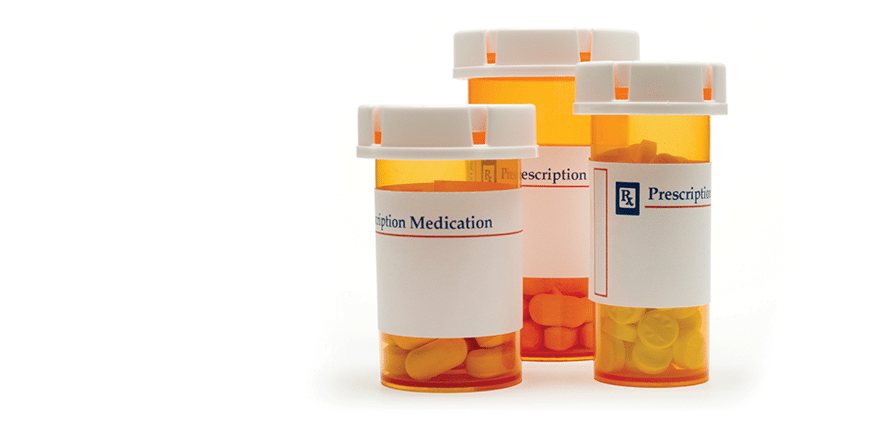
Generic ≠ Original
When a patent expires on a brand name medication, the owners no longer have protection as exclusive producers of the active medical ingredient. This means that other companies may manufacture the active medicine but generally will not have access to the complete formula that makes the original brand name product unique.
Your pharmacist may encourage substituting a generic drug in place of the one your physician prescribes, however, although the primary medicinal ingredient in a generic drug is the same as the brand name, the coating and other ingredients could be very different.
Medicines, especially taken by those with gastrointestinal (GI) diseases and disorders, must get where they need to go to do their job without further harming an already vulnerable GI tract. Sometimes the medicine needs protection from the harsh acidic stomach environment, which can damage or destroy it before it gets a chance to work. As fully explained in Are the Coats on Your Pills the Right Fit for Your Gut?, first published in The Inside Tract® issue 165, enteric coating helps medicine get past the stomach and release in the intestines, where it can work properly. Medication coatings vary in consistency and formulation to allow immediate, delayed, or continuous release. Some, by design, can target specific areas of the GI tract to promote healing.
The different ingredients and variety of medication coatings are just a couple examples of why generic drugs don’t always deliver what the original drugs deliver. Some studies on generic drugs have shown they can release at a different location than do their original counterparts. This can cause the medicine to disperse in healthy areas of the body, possibly causing side effects, and making it less beneficial to the area of need. Substituting your gastrointestinal medication prescription for a generic version of the drug could cause side effects after a while, and by the time you notice them, it could be difficult to get things back under control.
Although generics are legally required to be bioequivalent to their brand name counterparts, in cases where physicians monitor a patient’s response to a medication’s effectiveness through laboratory testing, it may be prudent to conduct extra testing when switching from a brand name drug, to be sure of the generic’s usefulness in treating your condition.
Ask your physician for advice on choosing the safest and most effective type and brand of medication for you before filling your prescription.
Generic Cost Factors
As patent-holders, the brand manufacturers carry the enormous costs involved in developing and testing a medicine from scratch, including tremendous resource expenditures proving to regulatory agencies – and patients – that the active ingredient is safe and effective. Since generic companies do not bear these financial burdens, they should be able to offer their products at substantially less cost than the original.
In a just-released study, Canada’s Drug Price Paradox 2008, researchers found that Canadian prices for generic prescription drugs in 2007 were on average 112% higher than US prices for the identical drugs, up substantially from 78% higher when these products were compared in 2003.
At the same time, Canadian prices for brand name patented prescription drugs in 2007 were on average 53% lower than American prices, compared to 43% lower on average in 2003. The complete study is available at www.fraserinstitute.org, comparing 100 of the most commonly prescribed medications.
In Quebec it’s the law for your pharmacist to ask your permission before substituting a generic drug for the brand name medicine your doctor prescribes.
Why are brand name medication prices decreasing and generic prices increasing compared to the American Market? In the report, principal author, Brett Skinner, Fraser Institute Director of Health, Pharmaceutical and Insurance Policy Research had some comments. “Canadians are paying more than Americans for generic drugs because Canadian government policies are insulating generic drug companies and pharmacy retailers from normal, competitive free market forces that would put downward pressure on prices for generic drugs.”
He calculated that in 2007 alone, Canadian federal-provincial-territorial policies regulating prescription drugs cost Canadian consumers an estimated $2.9 to $7.5 billion in unnecessary spending due to a combination of inflated prices for generic drugs and inefficient substitution of medicines. Among the many policies that distort the Canadian market for prescription drugs, Skinner argues:
- Drug programs reimburse pharmacies for the cost of prescriptions instead of reimbursing consumers. This insulates consumers from the cost and removes incentives for comparative shopping that would put downward pressure on prices.
- Provincial drug programs also reimburse generic drugs at a fixed percentage of the price of the original, brand name drug. Under fixed-percentage reimbursement, there is no incentive for retailers to undercut each other to win sales. This is because the buyer (government) offers every seller the same price, which they know in advance. As a result, pharmacies simply charge up to the maximum allowable, which is set much higher than the price that would result if consumers were exposed to the cost directly.
- The public reimbursement system allows generic drug manufacturers to exchange rebates for exclusive distribution rights, which give their particular products virtual monopolies in retail pharmacies. These discounts are not passed on to public drug plans because pharmacies can keep the difference between the reimbursement rate set by government and the rebate offered by manufacturers.
- Meanwhile, the monopoly that results from the exclusive distribution arrangements creates one price for all buyers within retail chains. This means that private insurance payers and any uninsured consumers also pay the inflated generic prices paid by public drug plans.
“Canadian governments defend their intrusion in pharmaceutical markets by claiming their policies reduce the costs of prescription drugs for consumers. Yet this study shows that Canadians pay much more than they should for generic drugs because government policies are distorting the market,” Skinner added.















